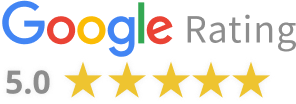Understanding where insurance fits in your budget—whether as a fixed or variable cost—can make a big difference in your financial planning. From small business owners balancing employee benefits to individuals navigating healthcare options, cost classification influences how you prepare, spend, and grow.
This guide breaks down the ins and outs of insurance expenses, helping you budget smarter and align with financial best practices.
Why Insurance Cost Structure Matters
If you’re a business owner evaluating benefits packages or an individual planning a personal budget, you may wonder: is insurance a fixed or variable cost? This distinction matters because it shapes how you manage your expenses, forecast your budget, and comply with financial reporting requirements.
Cost classification plays a central role in insurance budgeting, as knowing whether insurance is predictable or fluctuates with use can improve expense tracking and planning. In both personal finance and insurance operations, this knowledge provides clarity and control over financial decision-making; a well-structured budget can be the difference between sustainable cash flow and unexpected shortfalls, especially when insurance premiums make up a large portion of fixed or semi-variable outlays.
Understanding the classification also helps you comply with accounting standards, properly allocate costs in financial statements, and make smarter decisions around benefit offerings or personal healthcare planning. Whether you’re working with a CPA, a financial advisor, or managing your own books, classifying insurance correctly is a core part of optimizing your financial strategy.
Defining Fixed and Variable Costs
In accounting, a fixed cost is an expense that does not change with production or service levels; common examples include rent, salaries, loan payments, depreciation, and most insurance premiums. These costs are incurred regardless of business activity, making them easier to forecast and more stable for long-term financial planning.
On the other hand, a variable cost changes in direct proportion to business operations. Think of raw materials, shipping costs, or hourly labor that rises with increased sales volume. These expenses are less predictable and can shift quickly based on external market factors or internal business performance. Fluctuations can complicate budgeting efforts, especially for businesses with seasonally driven operations or rapidly changing production needs.
In the context of fixed cost vs variable cost classification, insurance can be tricky. While some aspects of insurance are consistent and recurring, others depend on usage or external factors like claims, plan adjustments, or policy changes. For example, insurance tied to fleet vehicles might vary with mileage or accident history. That’s why insurance is often considered a hybrid expense—generally fixed in structure, but with elements that may vary depending on the plan type, usage, or industry-specific risk factors.
Clarifying this distinction helps align your budgeting practices with insurance accounting norms and IRS reporting standards. It also ensures that business owners and financial managers follow generally accepted accounting principles (GAAP) when classifying and reporting expenses. By clearly identifying which components of your insurance fall under fixed or variable categories, you’ll be better positioned to maintain financial accuracy, avoid misreporting, and build more reliable forecasts.
Is Insurance Typically a Fixed Cost?
For most individuals and businesses, insurance premiums are a fixed expense. Health, life, disability, and property insurance often require monthly or annual premium payments that remain consistent over the policy term. For example, employer-sponsored health insurance plans typically involve stable costs per employee, making it easier for companies to manage benefit-related spending and payroll planning.
In this way, insurance for businesses usually qualifies as a fixed cost, helping ensure predictability in benefits planning and administrative budgeting. Group health plans are often structured with fixed contributions or premiums, simplifying compliance with federal and state regulations. Consistency not only simplifies payroll administration but also reduces the risk of budget shortfalls tied to fluctuating benefit expenses.
Fixed insurance costs are also advantageous from a financial forecasting perspective. By locking in known monthly or yearly premiums, both individuals and businesses can better estimate total expenditures and set aside funds accordingly. Stability is critical in long-term planning and in maintaining insurance coverage without disruption.
In addition to their fixed nature, insurance premiums contribute to a larger discussion on health insurance cost structure. This structure varies based on employer contributions, plan type (e.g., HMO, PPO), and whether dependents are covered. Understanding the breakdown of this structure supports better planning and benefit evaluation.
To learn more about group insurance cost structures, visit Selected Benefits’ guide for clarity on employer obligations, premium structures, and regulatory considerations.
When Insurance Becomes a Variable Cost
However, insurance isn’t always strictly fixed. Some policies include usage-based elements or flexible features that shift the cost structure. These components introduce unpredictability, making it harder to anticipate monthly or annual spending without careful monitoring.
For example:
- High-deductible health plans (HDHPs) result in higher out-of-pocket spending, which varies based on care usage
- Usage-based auto insurance adjusts premiums based on mileage or driving behavior
- Optional add-ons or coverage changes during the year can create a semi variable cost profile
These fluctuations introduce complexity in cost tracking and financial reporting. Businesses with seasonal workers may opt for temporary or limited coverage plans that behave more like variable expenses. Uncertainty makes it critical for businesses and individuals to regularly assess coverage needs and budget for possible fluctuations.
This variability is especially relevant for freelancers and self-employed individuals, where insurance needs fluctuate. Elements like co-pays, coinsurance, and deductibles introduce variable expenses into what may otherwise appear to be a fixed premium. The Affordable Care Act has also introduced more variability in costs through income-based subsidies and tiered plan options. As a result, even those with seemingly fixed premiums may face unexpected expenses depending on how and when they use their insurance.
Ultimately, this highlights the diversity in types of insurance expenses, ranging from base premiums (fixed) to deductibles and service fees (variable). Understanding these distinctions is essential when forecasting total coverage costs. Explore more about changing group health plans or learn what a certificate of coverage includes.
Cost Implications for Small Business Owners
For small business owners, classifying insurance properly is key for both operational and tax planning. Health insurance contributions made on behalf of employees are typically treated as employee benefit costs, falling under fixed business expenses. However, this is only accurate when premiums are stable and consistent across the workforce. If costs fluctuate due to plan changes or individual coverage adjustments, the classification may need to shift accordingly in financial reports.
Accurate classification supports better financial forecasting and keeps businesses aligned with IRS guidelines. It also impacts decisions about benefits packages, hiring, and regulatory compliance. If businesses misclassify insurance expenses, they may risk errors in tax filings, budget overruns, or poor financial visibility. Issues like these affect not only day-to-day operations, but also the long-term financial health and business credibility during audits or investor evaluations.
Small businesses must also weigh the trade-offs between fixed premium stability and the flexibility of variable or semi variable cost options. These choices can significantly impact short- and long-term financial planning. A business that offers multiple plan tiers to employees, for instance, may see cost variation depending on enrollment.
Smaller companies may benefit from professional consultations to understand their exposure, especially when expanding, hiring, or adjusting coverage options. This is crucial to ensuring that insurance costs don’t unexpectedly impact liquidity or cash reserves. Having a clear view of potential insurance liabilities helps safeguard business continuity, especially during periods of economic uncertainty or rapid growth.
How to Plan Insurance Costs in Your Budget
Whether you’re managing a household or a business, insurance planning should be part of your annual budgeting process. Building this into your routine helps avoid last-minute surprises and ensures your coverage aligns with evolving financial goals.
Here are a few best practices to follow:
- Distinguish between fixed expenses (premiums) and variable expenses (deductibles, copays)
- Use historical spending data to forecast healthcare expense planning
- Compare coverage tiers and assess how plan changes could affect overall costs
- Include seasonal or temporary policy adjustments in financial projections
- Monitor inflation and regulatory changes that might impact rates
Budget worksheets and planning tools can help streamline the process, especially for self-employed professionals managing both business and personal finances. Many of these tools allow you to model total cost of ownership for various plan types and estimate out-of-pocket costs more precisely. Projections allow you to test different scenarios, making it easier to select the most cost-effective plan for your unique needs.
Additionally, tax-advantaged accounts such as HSAs and FSAs can help smooth out variability in medical expenses. Allocating funds toward these accounts ensures more predictable insurance budgeting and may offer tax savings. Taking advantage of these tools not only cushions unexpected healthcare costs but also improves long-term financial efficiency.
If you’re buying insurance for the first time or considering a new policy, check out individual and family health insurance plans or supplemental insurance options from Selected Benefits.
Clarifying the Cost Category
So, is insurance a fixed or variable cost? In most cases, insurance is a fixed cost — especially in the form of stable monthly or annual premiums. But depending on the policy design and user behavior, it can also include variable expenses.
For budgeting, financial forecasting, and tax planning, identifying these components is essential. As a rule of thumb:
- Fixed: Premiums, employer contributions, standard policy fees
- Variable: Deductibles, copays, usage-based adjustments, flexible add-ons
Understanding this distinction enhances financial control and transparency. If you’re unsure how your current policies impact your budget, get in touch with a health insurance advisor to explore options tailored to your financial goals.


